Take a Second Look at Production Aluminum Tooling
One moldmaker has put aluminum tooling to the test and advises a second look for your high-volume automotive applications because it can address your quality, cycle time and cost challenges.
Share
Read Next
Three terms define the business-success paradigm for today’s mold manufacturers and injection molders—particularly those who serve the automotive industry: quality, cycle time and cost.
Now, if there was a technology available that helped you in these three critical areas, and it didn’t require new investment in machines, force wholesale replacement of your workforce or change anything but your bottom line, wouldn’t you pursue it?
That technology exists today in the form of aluminum tooling for high-volume automotive applications, and it’s high time that aluminum should be a material of choice in applications where traditional P20 steel has been traditionally specified without giving serious thought to any alternative.
Put to the Test
It’s becoming well known that toolmakers can produce an automotive production mold faster and at lower cost in aluminum than in P20 steel, and that aluminum tools will run at cycle times anywhere from 30 percent to well above 50 percent shorter than with steel. What’s more, at half to one-third the weight of a P20 steel tool, aluminum results in less wear and tear on the molding machine.
Based on experience in the automotive industry with aluminum tools for high-volume applications, tool builders have the ability to realize savings of 5 to 10 percent on the construction of new tools for the majority of their applications, as well as the added benefit of reduced production leadtimes of 10 percent or more versus steel.
Also, part production cycle time reductions of 20 to 40 percent or even more are readily achievable with aluminum tools, given aluminum’s superior thermal conductivity.
However, tools for flat, relatively low-profile parts with few man-hours due to lack of mechanics will have less of a cost savings, and possibly even be higher in price, since material prices for aluminum are higher than steel. This will offset any savings created by higher build hour tools.
Tools that have more mechanisms and depth require more machining, spotting, drilling and benching, which will save time in aluminum versus P-20. Thus, aluminum tooling is not only a high-performance molding technology, it can also be an energy and cost saver.
Break Down the Roadblocks
So, where are the roadblocks and barriers to success with aluminum tooling? Currently some hot runner suppliers are using their existing technology successfully on aluminum tools; and, in a similar way, mold simulation suppliers have had no difficulty working with aluminum tooling either.
Tool Maintenance
Issues like flash and parting lines are considerations for any tool, steel included. Nonetheless, tool maintenance is different with aluminum for a couple of different reasons that may require the development of your own in-house techniques when welding aluminum. Production maintenance personnel will need to develop an additional skill set for welding aluminum.
Aluminum is not more difficult to weld than steel, but there are differences in process and technique that must be learned. Color matching can be a challenge. Welding technicians who are inexperienced with 7000-series aluminum and working on the “A” side of the tool need to be aware of the propensity for aluminum tools to show a color mismatch, unless strict attention is paid to proper technique. Color mismatch becomes an important issue if the tool surfaces will be textured. However, a good welder who is familiar with steel tools can be readily trained to work with aluminum.
Moving forward this is predicted to not be a significant issue because aluminum suppliers will continue to introduce new tools, materials and techniques to assist maintenance personnel in this area. As with steel, it is also recommended that one strictly adhere to preventive maintenance schedules.
Processing Training
Operator training will be required. It’s important to remember that cycle times are significantly shorter with aluminum than steel because of aluminum’s higher thermal conductivity. If you were to set up a press to run with the same molding process for an aluminum tool as you would for a P20 tool—which would involve longer fill, pack and hold times—you’d typically see the part come out of the aluminum tool with some pin push, as well as a lot of drag marks or stress marks. If that happened with a steel tool, you’d probably lengthen the molding cycle, thinking that would alleviate the problem. In aluminum, it would make things worse.
Also, if aluminum tools are put in presses that are too big, with more clamp pressure than needed, then shot size can become a problem in relation to barrel capacity. Of course, that can be an equal problem with steel tools.
The big difference with aluminum is that with reduced cycle times and clamp pressures you’ll be looking to optimize your molding operations on smaller machines that have a smaller footprint and result in lower operating expenses for your molding operation.
It is recommended that aluminum tools run on smaller machines with reduced clamp tonnage. You don’t want to over-clamp and close up all the parting lines or vents. Also note that aluminum tools should be allowed to breathe to remove the gases that build up. It is recommended that aluminum tools be opened and wiped down after each shift to remove any residue that might build up due to gases. Many tool builders recommend this practice for steel tools, as well.
Finally, an aluminum tool that is run properly will typically produce a higher quality part. Aluminum conducts heat better than steel. As a result, there are typically fewer hot spots in aluminum than are typical in a P20 steel mold. Resins also flow faster and set up faster. There are fewer stresses in parts coming out of the mold.
Summary
Does this mean steel is on its way out? Not likely; however, aluminum tooling has earned its place for large production runs in the automotive industry—and in other industries as well.
Contributor:
After his father founded Unique Tool & Gauge in 1982, Darcy King joined the firm in 1995 and worked in every phase of operations, becoming president in 2005.
For More Information:
Unique Tool & Gauge
(519) 737-1159
unique-tool.com
Related Content
How to Machine Aluminum Molds to Enhance Efficiency and Quality
Ways to optimize the machining process to fully leverage the benefits of an aluminum mold.
Read MoreRoughing, Finishing Aluminum-Specific End Mill Line Expansion
Extended range of Sandvik Coromant’s CoroMill Dura versatile solid end mills engages stable cutting, small burr, good surfaces and minimal vibration.
Read MoreAluminum Plate for High-Temperature Tooling Applications
NPE2024: Ellwood Specialty Metals exhibits its EllCast 2 aluminium plate. Its strength at high temperatures, combined with high thermal fatigue resistance and hardness, makes EllCast 2 ideal for critical applications.
Read MoreTechnology Review and Sourcing Guide 2024: Mold Materials
Building a high-quality mold requires the proper selection of appropriate mold materials. Tool steel, aluminum, copper and alloys are a just a few examples you can fin in this exclusive, online-only content that includes a supplier list for mold materials.
Read MoreRead Next
Choosing the Right Aluminum Alloy for Production Injection Molds
Aluminum may be a better solution than steel after a thorough review of part design, tool design, quantity and type of unfilled, aluminum-friendly resin.
Read MoreAre You a Moldmaker Considering 3D Printing? Consider the 3D Printing Workshop at NPE2024
Presentations will cover 3D printing for mold tooling, material innovation, product development, bridge production and full-scale, high-volume additive manufacturing.
Read MoreHow to Use Strategic Planning Tools, Data to Manage the Human Side of Business
Q&A with Marion Wells, MMT EAB member and founder of Human Asset Management.
Read More
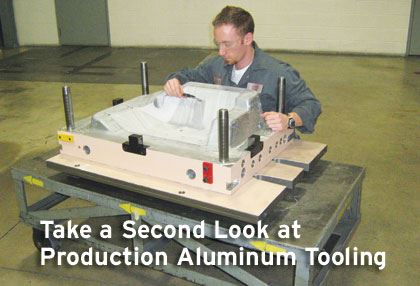

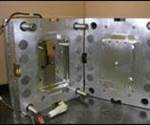



.jpg;maxWidth=300;quality=90)






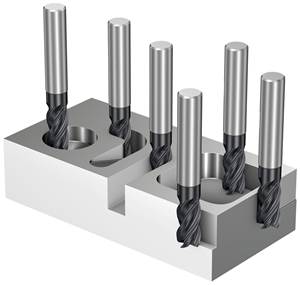
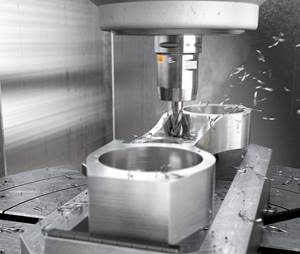
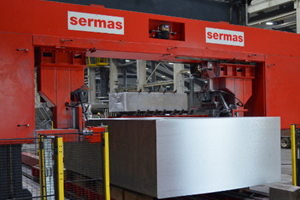




.jpg;maxWidth=970;quality=90)